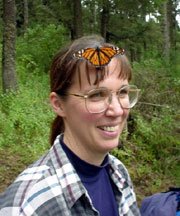“Citizen science” is trendy. From keynote presentations at major scientific conferences to official recognition from the White House, citizen science seems to be everywhere. But what exactly is it?
Broadly defined, citizen science covers any activity by which regular people are contributing to scientific research, or integrating science more closely in their day-to-day lives. (We’ve already seen how people are getting involved through crowdsourcing; this new trend goes a step further.) Citizen scientists are those who believe in the power of technology and research—and are finding ways to advance their lives and those of others by embracing a scientific approach.

Recently, the White House gave out awards to 12 citizen scientists for being “Champions of Change” in an ongoing program to recognize innovators across a host of fields. Among the citizen scientist winners was John Rowden, who trained New York City teenagers to gather data on local wildlife for the National Audubon Society. Similarly, winner Karen Oberhauser at the University of Minnesota started a project to monitor Monarch butterfly larvae across North America, relying on hundreds of volunteers to collect and report information from their neighborhoods. To imagine how this might help, consider how useful it would have been for scientists struggling to understand colony collapse disorder—the devastating phenomenon that has wiped out millions of bees around the world—if they had data coming in from hundreds or thousands of volunteers in the field instead of just isolated reports from beekeepers. As citizen science takes off, it’s easy to imagine that local volunteers will become critical in monitoring bee populations in the coming years to look for early signs that this phenomenon is abating or getting worse.
Beyond these grassroots science approaches, there has also been steadily growing interest in do-it-yourself science. DIY biology clubs have sprung up in cities around the U.S., with people buying low-cost scientific instruments from vendors like eBay to develop their own makeshift labs. BioCurious, a nonprofit organization in Sunnyvale, Calif., invites anyone to use its labs and equipment for their own amateur experiments. (BioCurious founder Eri Gentry was another winner of the White House citizen science award.)
If counting butterfly larvae or running experiments isn’t your thing, ordinary people have another way to make a valuable contribution to science: financial donations. As government and major philanthropic funding sources slow, crowdfunding has taken off as an avenue to help scientists continue their research. Websites such as Kickstarter, PetriDish.org, Microryza, and numerous others let people browse through existing or planned research projects and contribute money to those they find interesting or worthy.
Whichever way it happens, the rise of citizen science means PhD types are no longer the only ones who can make real contributions to the research community.
No PhD Required: Science Goes Grassroots
“Citizen science” is trendy. From keynote presentations at major scientific conferences to official recognition from the White House, citizen science seems to be everywhere. But what exactly is it? Broadly defined, citizen science covers any activity by which regular people are contributing to scientific research, or integrating science more closely in their day-to-day lives. (We’ve already seen how people are getting involved through crowdsourcing; this new trend goes a step further.) Citizen scientists are those who believe in the power of technology and research—and are finding ways to advance their lives and those of others by embracing a scientific approach.

















